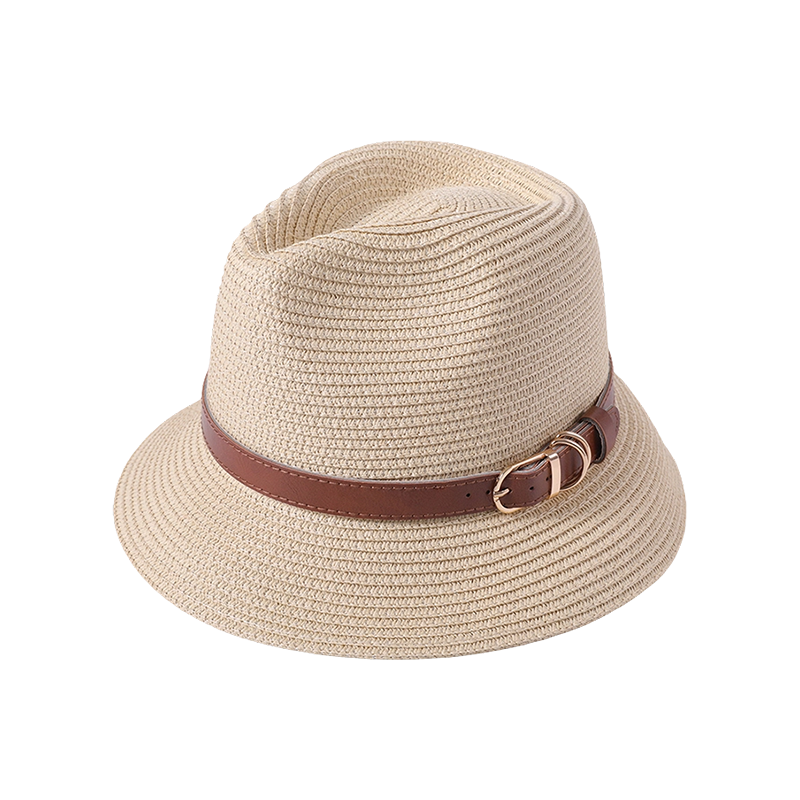Submit feedback
Why Is the Straw Topper More Than Just a Hat?
 2024.06.14
2024.06.14
 Industry News
Industry News
The straw topper, commonly known as a straw hat, has been a staple in wardrobes across the globe for centuries. But why is the straw topper more than just a hat? The history of the straw topper reveals fascinating insights into cultural, economic, and social developments from ancient civilizations to modern times. This article delves into the rich history of the straw topper, highlighting its significance and transformation over the years.
Origins of the Straw Topper: Ancient Beginnings
The straw topper has ancient roots, with evidence of its use dating back to early civilizations. In ancient Egypt, the straw topper was not only a practical accessory for protection against the sun but also a symbol of status and fashion. Egyptian hieroglyphs and tomb paintings depict individuals wearing straw toppers, indicating their prevalence in daily life and ceremonial contexts.
In ancient Greece and Rome, the straw topper was similarly valued. Known as the "petasos" in Greece, this early straw topper was a broad-brimmed hat used by farmers, travelers, and even soldiers. The Romans adopted the straw topper, integrating it into their attire for both practical and aesthetic purposes. The lightweight, breathable nature of straw made it an ideal material for headwear in hot climates.
The Straw Topper in the Middle Ages
During the Middle Ages, the straw topper continued to be an essential item, particularly among rural populations. Farmers and laborers wore straw toppers to shield themselves from the sun while working in the fields. These straw toppers were typically simple in design, reflecting the utilitarian needs of the time.
However, the straw topper also found its way into the wardrobes of the European elite. In the late medieval period, straw toppers became more elaborate, often adorned with ribbons, feathers, and other decorative elements. These fashionable straw toppers were worn during outdoor leisure activities, such as hunting and picnics, signifying the wearer’s social status and taste.
The Renaissance and the Evolution of the Straw Topper
The Renaissance brought a renewed interest in art, culture, and fashion, consequently significant changes in the design and popularity of the straw topper. Artists like Pieter Bruegel the Elder depicted scenes of everyday life that included peasants wearing straw toppers, highlighting their continued importance in rural communities.
In Italy, the straw topper became a symbol of regional identity. The famous "Leghorn" straw topper, originating from the city of Livorno (Leghorn), was highly prized for its fine craftsmanship. Made from high-quality straw and carefully woven, the Leghorn straw topper became a fashionable accessory across Europe, worn by men and women alike.
The Straw Topper in the 18th and 19th Centuries
The 18th century saw the straw topper become an integral part of European fashion. The advent of the Industrial Revolution led to advancements in straw processing and hat-making techniques, making straw toppers more accessible to a broader population. During this period, the straw topper evolved into various styles, including the wide-brimmed "picture hat" popular among women and the more structured straw boaters worn by men.
In the 19th century, the straw topper reached new heights of popularity. The Victorian era embraced the straw topper as a fashionable and practical accessory for summer. Straw toppers were often embellished with flowers, ribbons, and lace, making them a key element of women’s attire. Men’s straw toppers, such as the Panama hat, became synonymous with travel and leisure, particularly in tropical regions.
The Straw Topper in the 20th Century
The 20th century saw the straw topper transition from a purely functional item to a fashion statement. In the early decades, straw toppers were worn by Hollywood stars and public figures, cementing their status as stylish accessories. The iconic straw boater, associated with barbershop quartets and summer outings, became a symbol of the carefree lifestyle of the Roaring Twenties.
During the mid-20th century, the straw topper continued to evolve with changing fashion trends. The 1960s and 1970s saw a resurgence of interest in natural materials and handmade goods and, consequently a renewed appreciation for traditional straw topper craftsmanship. Straw toppers became popular among the counterculture movement, symbolizing a return to simplicity and nature.
The Straw Topper Today: A Modern Revival
Today, the straw topper remains a beloved accessory, celebrated for its versatility and timeless appeal. Fashion designers frequently incorporate straw toppers into their collections, blending traditional techniques with contemporary styles. The eco-friendly nature of straw also aligns with current trends towards sustainability and ethical fashion.
The straw topper has also found a place in various cultural and social movements. Music festivals, beach holidays, and outdoor events often feature an array of straw toppers, showcasing their enduring popularity. Moreover, the straw topper continues to serve its original purpose of providing practical protection against the sun, making it a functional and fashionable choice for people of all ages.
The history of the straw topper is a testament to its enduring appeal and versatility. From ancient Egypt to modern fashion runways, the straw topper has transcended cultural and temporal boundaries, evolving to meet the needs and tastes of each era. Its journey from a simple protective headgear to a symbol of style and sophistication underscores the unique role the straw topper has played in human history.
So, why is the straw topper more than just a hat? Its rich history, cultural significance, and timeless charm make the straw topper a fascinating subject of study and a cherished accessory that continues to captivate and inspire. Whether worn for practicality, fashion, or both, the straw topper remains a quintessential element of global sartorial heritage.


 En
En  Español
Español 中文简体
中文简体










